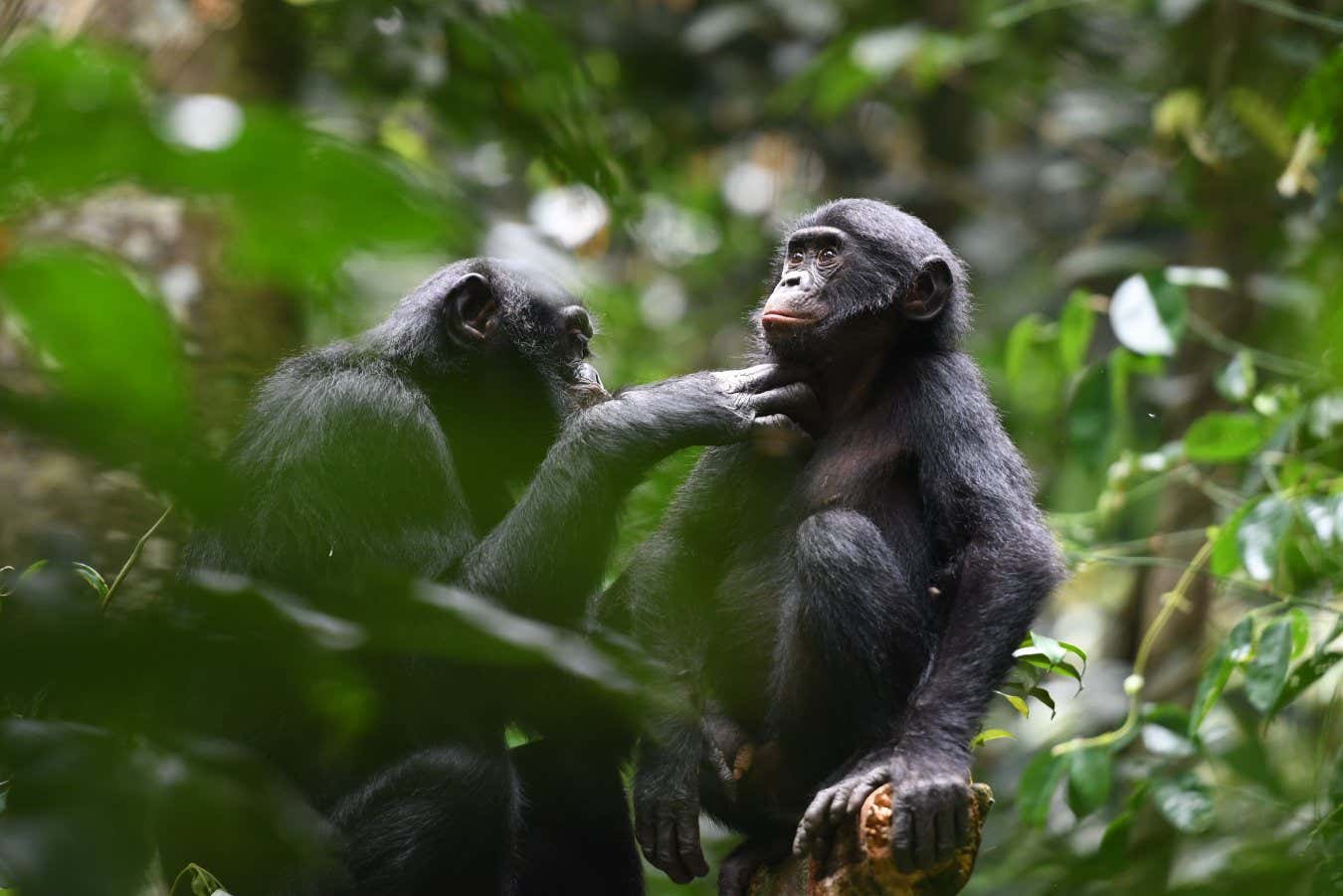Bonobos, in contrast to chimpanzees, often establish amicable connections with other bonobos in separate social groups, similar to some human behavior.
Unlike chimpanzees, who frequently display hostility towards other groups and engage in lethal confrontations, bonobos are known to engage in grooming and food-sharing with members of different groups. This challenges the notion of inherent violence in humans’ evolutionary ancestors, as suggested by Martin Surbeck from Harvard University.
Surbeck highlights that the potential for collaborative relationships between different groups is not exclusive to humans and may have emerged earlier than previously thought. This suggests a broader range of behaviors in our evolutionary history than previously realized.
While many animals cooperate within their social circles, or in-groups, hostile interactions between groups are common. The assumption that violence towards other social groups is innate in humans, arguably influenced by the behavior of chimpanzees, is challenged by the extensive cooperation evident between individuals from different social circles in humans, as observed by Liran Samuni from Harvard.
Bonobos, being one of humans’ closest living relatives, are generally known to be more peaceful, showing less violent behavior compared to chimpanzees, according to Surbeck.
To further understand interactions between groups, Surbeck and Samuni studied 31 adult bonobos from two separate social groups in the Democratic Republic of the Congo. They observed 95 encounters between the two groups, during which the bonobos engaged in grooming, food sharing, and forming alliances with in-group members, as well as displaying cooperation with out-group members.
In contrast to chimpanzees, the bonobos’ cooperative behaviors with out-group members were notable, with mutual grooming and food sharing occurring between different social groups. The study found that most bonobos received immediate benefits from grooming, while food sharing often did not result in reciprocation, suggesting that their actions were not solely motivated by immediate rewards.
Kasper Otten from the Research and Documentation Centre in the Netherlands finds these findings exciting, noting that they challenge the notion of human exceptionalism regarding cooperation outside one’s group. The study also revealed that the bonobos most cooperative within their groups were also the most cooperative with out-group members, echoing findings from humans.
The cause of the distinct levels of hostility and cooperation between chimpanzees and bonobos remains uncertain. Samuni suggests that the variations may be linked to the social structures of the two species, with male dominance prevalent in chimpanzees and a higher female status in bonobos. This may relate to theories in human evolution regarding male warrior hypotheses and differences between the sexes in competition.








